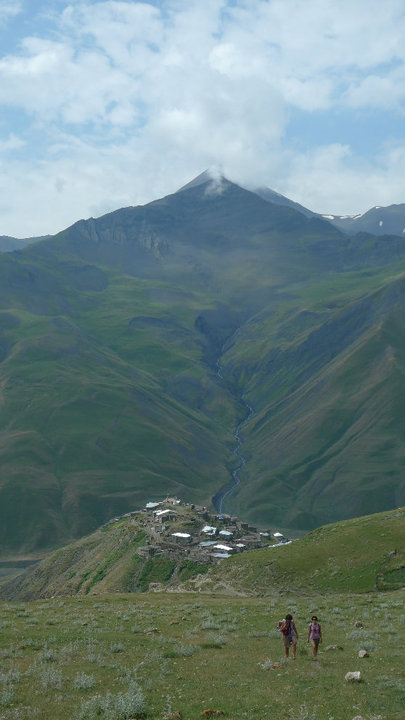
By Yelena Shuster, KF 11, Azerbaijan
I’d like to tell you about language in Azerbaijan especially since there have been some questions among Kiva lenders and translation volunteers as to why Komak is posting profiles in Russian using Latin letters instead of Cyrillic.
You see, since the start of the 20th century the Azeri alphabet has metamorphosed 3 times…
- Prior to 1929 Azeri was written in Perso-Arabic script.
- 1929–1938 A Latin alphabet was used (although it was different from the one used now).
- 1938 to 1991 The Cyrillic alphabet was imposed by the Soviet Union.
- 1991 With independence, the current Latin alphabet was introduced.
I’ve met several folks in their 40s and 50s who grew up reading only Cyrillic and now have difficulty reading newspapers and books. How isolated they must feel with their access to newspapers, magazines and books so unfairly limited by the alphabet!
In the early years of the Soviet era, Azeri was widely spoken among elite and government circles. But as Stalin solidified his position in the late 1920s and early 1930s, sweeping away Azerbaijan’s native intelligentsia through exile and execution, the Russian language came to dominate politics, meetings, offices and education.
Many parents sent their children to schools with Russian language instruction believing that the good jobs required Russian. According to a young Azeri friend of mine this linguistic shift created a population that could speak neither Azeri nor Russian effectively. For children of Azeri speaking parents, a lack of language reinforcement from their social circle meant that their knowledge of Russian did not develop beyond a certain point, and that their knowledge of Azeri remained equally stagnated because their communication with their (Azeri speaking) parents was limited by the language differences.
After the fall of the Soviet Union in 1991, attempts to stimulate the use of Azeri increased. The “government Azeri language program,” established in 1990, provided Azeri lessons to non-Azeri speakers for use in the workplace. In 1994 it was estimated that some 82% of Azerbaijan’s citizens spoke Azeri as their first language, while 38% of Azerbaijanis spoke Russian fluently as well. Twenty years later, knowledge of Azeri continues to grow in importance and an inability to speak the language is becoming a greater barrier for employment opportunities.
In 1993, Azar Mammad, wrote: “It’s the miserable and bitter truth that you cannot fnd many intelligentsia in Azerbaijan who can speak their own native language. Others simply cannot express themselves without Russian. And let me remind you that it is not their fault, either.”
To better understand the complexities behind the language issues, read these interesting editorials from 1993 between two Azeri citizens, one who speaks his native language fluently and one who doesn’t.
Here at Komak, only 3 out of 13 staff members are fluent in Russian, while 2 others speak it a little bit. Within the middle-aged population of Baku, most are fluent in Russian, that is unless they migrated to Baku from another region, in which case they might not speak Russian very well. Among older men who served in the army before the collapse of the Soviet Union, Russian is spoken, albeit with a few errors. Among the youth of Baku, it varies. I’d estimate that 1 out of every 3 youth speak Russian in the capital city. Outside of Baku, the numbers are lower. Unless you’re in Krasnaya Sloboda, the 800 year old Jewish community in northeastern Azerbaijan, where the locals speak their native Judeo-Persian, Azeri and Russian.
Some interesting facts about the Azeri language:
- It is the official language of Azerbaijan and an official regional language of Iran.
- There are two main varieties of the language: North Azerbaijani (spoken in Azerbaijan) and South Azerbaijani (spoken in Iran).
- In Iran, Azeri is called “Türki.” It’s spoken by 19-34% of the population, including districts of Tehran province and parts of Kurdistan.
- All together, there are at least 30 million people worldwide who speak Azeri, with significant linguistic communities in Azerbaijan, Iran, Dagestan, Georgia, Uzbekistan, Syria, Iraq, Turkey, Turkmenistan, Kazakhstan, Kyrgyzstan and Russia.
Yelena Shuster is a Kiva Fellow serving with Komak Credit Union in Azerbaijan. Support Komak borrowers and join our team Friends of Komak!
Become a Kiva Fellow or Volunteer with Kiva!
PREVIOUS ARTICLE
Transparency Through Client Feedback →NEXT ARTICLE
A blog can only give you so much →














